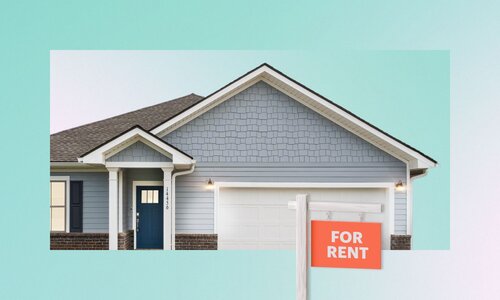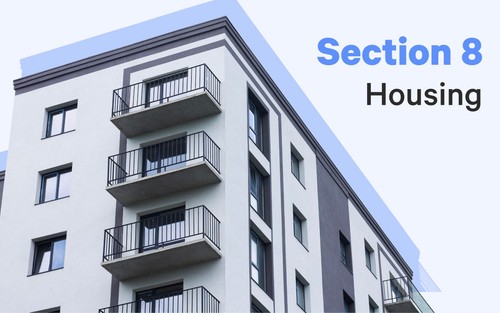Are you among the growing ranks of first-time homebuyers? Congratulations! Buying a first home is exciting and overwhelming all at the same time. You are embarking on a new chapter in your life. Whether you are buying a starter home, a forever home, or an investment property, there are many things to consider.
Where should you buy it? How much can you afford? What kind of loan do you need? How much money will you need for a down payment and closing costs?
Don’t worry – we’re here to help. This article will provide information on first-time homebuyer programs, loans, grants, and lender requirements to help make the process easier.
Eligibility for first-time homebuyers
First-time homebuyers enjoy myriad opportunities to make that all-American homeownership dream a reality. These come from state assistance programs, federal-backed mortgages, flexible mortgage qualifications, and tax breaks.
What is a first-time homebuyer?
To take advantage of first-time homebuyer programs, you must meet a first-time homebuyer’s definition and eligibility criteria; these are:
- Someone who has not owned a home as a primary residence in the last three years.
- A single parent who only owned a home with their former spouse.
- A displaced homemaker who only owned a home with their spouse.
- Someone who has owned a home that did not meet building codes and can cost more to bring it up to the current regulations than building a permanent structure.
- Someone who has only owned a principal residence that’s not fixed to a permanent foundation under the prevailing regulations.
How to be an eligible first-time homeowner
These are the most common eligibility requirements for first-time home buyers, which will vary depending on your mortgage type:
- Have a good credit score, at 620 for a conventional loan and 580 for FHA.
- Raise at least 3% for the down payment.
- Have a steady source of income.
- Have an employment history of at least two years.
- Have a debt-to-income ratio of 43% and lower.
First-Time Home Buyer Loans and Eligibility
One of the most significant issues homebuyers face is saving for a down payment. It often takes several years to come up with the necessary funds. In addition to the down payment, rounding up closing costs can be another big hurdle.
Buyer closing costs typically run between 2% to 5% of the loan amount. So, if you’re applying for a $200,000 loan, closing costs could range from $4,000 to $10,000, plus your down payment amount.
Down Payment Assistance Programs (DPA)
Fortunately, thanks to down payment assistance programs, you can get grants and low-interest loans that cover all or part of your down payment and closing costs. These programs can benefit moderate-income borrowers. The four types of DPA programs are:
- Grants: gift money (not repayable). Grants are less common than the other types of DPA programs, but the popular options are NHF grants and Bank America Home Grants.
- Low-interest loans: these second mortgages are offered at a lower interest rate to help with the house down payment and closing costs. It is payable simultaneously with your primary mortgage.
- Forgivable loans: a second mortgage that’s forgivable after a set number of years, e.g., 5, 10, or 20 years. You must also be up-to-date with your mortgage payments. Remember that forgivable loans must be repaid if you sell, move or refinance the mortgage too early.
- Deferred loans: are interest-free loans that are repayable if you sell or refinance your first mortgage.
Every state has its own DPA program eligibility requirements, so research the specific qualifications for your area.
Although a 20% down payment gives you more house equity, many loan programs are available for first-time homebuyers that only require 3%. In addition, options are available for fixed-rate mortgages and payment loans with a variable interest rate.
If you have a good credit score and a steady source of income, these loans can help make your dream of owning sooner come true.
First-Time Home Buyer Program
Although there are many housing programs, grants, and homeownership assistance options available, the reality is that qualifying means meeting certain conditions. What’s more, the eligibility requirements for these assistance programs differ depending on your state, income limits, and overall situation. Here are some of the most common mortgage programs for most homebuyers, including first-time buyers.
FHA loans
Federal Housing Administration loans are mortgages backed or insured by the federal government. FHA loans often require a lower down payment. You can also borrow up to 96.5% of the home purchase price.
An FHA loan requires a credit score of at least 580 and a 3% down payment. You can still access an FHA loan if your credit score is as low as 500. However, you must have a 10% down payment with a lower credit score.
Conventional loans
These are mortgages not backed by government agencies. Most conventional loans will fall under Fannie Mae and Freddie Mac lending standards, even if private lenders offer them.
Conventional loans offer a low down payment of at least 3%. However, you must have a credit score of at least 620 and a debt-to-income ratio of 43% and above. Additionally, there are limits to how much you can borrow, with the current limit for a single household being $647,200. The limits vary based on whether you are in a low, medium, or high-cost area.
VA Home loans
A VA Home Loan is a mortgage loan available to veterans, active duty service members, and eligible surviving spouses. One of the significant benefits of a VA loan is that there is no down payment required, which can make homeownership more accessible for first-time buyers.
Additionally, VA loans have no minimum credit score, although many lenders may look for a FICO score of around 620. Loans backed by the Veteran’s Association do not charge private mortgage insurance (PMI), saving borrowers money each month on their mortgage payments. Another perk for those using a VA loan to purchase their first home is the option for seller concessions, where the seller can contribute up to 4% towards closing costs and prepaid expenses.
Freddie Mac and Fannie Mae loan programs
Home Possible Mortgage from Freddie Mac and HomeReady Mortgage from Fannie Mae is designed for low-income and first-time borrowers. They have a low down payment requirement of 3% and require a credit score of at least 620.
Fannie Mae also offers the HomePath Ready Buyer mortgage loan. It is for first-time home buyers looking to purchase a foreclosed house listed by Fannie Mae on its HomePath listing. Fannie Mae offers a low down payment of about 3% and closing cost assistance of up to 3%.
USDA loans
The United States Department of Agriculture offers low-interest loans to qualified individuals looking to purchase a home in a rural or suburban area. These loans, known as USDA loans, can offer numerous benefits for first-time homebuyers.
First, these loans often have lower interest rates and a more straightforward application process than other types of mortgages. In addition, they do not require a down payment, and closing costs can be greatly reduced or even eliminated. Another benefit for first-time buyers is that the purchased property must meet specific safety and sanitation standards. This helps ensure that the purchased home is a suitable investment and reduces the likelihood of future repair costs.
Native American Direct Loan (NADL)
NADL Program helps Native Americans Veterans and their spouses access loans to buy, construct or improve homes on federal trust land. There is no required down payment or PMI in most cases, and the closing costs are limited. In addition, the interest rate for a mortgage starts at 6%, which is low compared to many other options.
For first-time homebuyers unfamiliar with the process of obtaining a loan, NADL offers homebuyer education support in navigating the steps necessary to secure financing for their first home. Additionally, as a VA program, NADL offers unique benefits to veterans, such as the option to use entitlement multiple times and a streamlined refinancing process.
Good Neighbor Next Door Program
The Good Neighbor Next Door program is open to both first-time buyers and current homeowners. To qualify, you must be a full-time employee as a teacher, law enforcement officer, emergency medical technician, or firefighter.
The program also limits purchases to homes within the US HUD (Department of Housing and Urban Development) revitalization area. It offers a 50% discount off the home’s listing purchase price, and you must live in the property for three years.
Neighborhood Assistance Corporation of America
NACA is a nonprofit organization fighting to close the wealth disparity gap. It helps underprivileged individuals access mortgages regardless of their credit score. Some of the notable benefits of its program include a 0% down payment, no closing fees or costs, and no PMI.
In addition, NACA’s program offers financial education and assistance in resolving credit issues, helping first-time buyers overcome barriers that may prevent them from owning a home. By going through the NACA program, first-time homebuyers can secure an affordable loan and gain the knowledge and resources necessary for responsible homeownership.
Get Help With Your Down Payment
Purchasing your first home is a major financial milestone, but it doesn’t have to be an unattainable goal, thanks to the many different types of loans and programs available to first-time buyers. These include federal, state, and local initiatives that provide financing assistance in the form of loans with low-interest rates and down payments, as well as grants that don’t need to be repaid.
If you’re thinking about becoming a homeowner, research the different types of assistance available to you to make informed decisions about which path is best for you.
Easily invest in real estate today
While owning a home can be a great way to invest in real estate, rental property may be another option. However, purchasing a rental property can often be more challenging than owning one’s own home, as additional responsibilities include finding tenants and dealing with property management issues. Fortunately, there are ways to invest in real estate without these added tasks.
One excellent option is to buy shares of rental homes or vacation properties through Arrived. They handle the responsibilities of finding and managing tenants while still providing the potential for rental income and appreciation of the property. Investing in this way allows individuals to benefit from real estate profits without the hassle or large initial down payment that traditional rental property ownership requires.
Browse our available properties today and see how your initial investment could grow over the long term.







